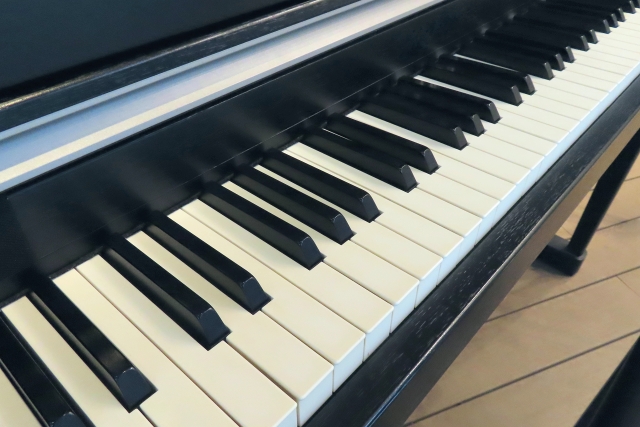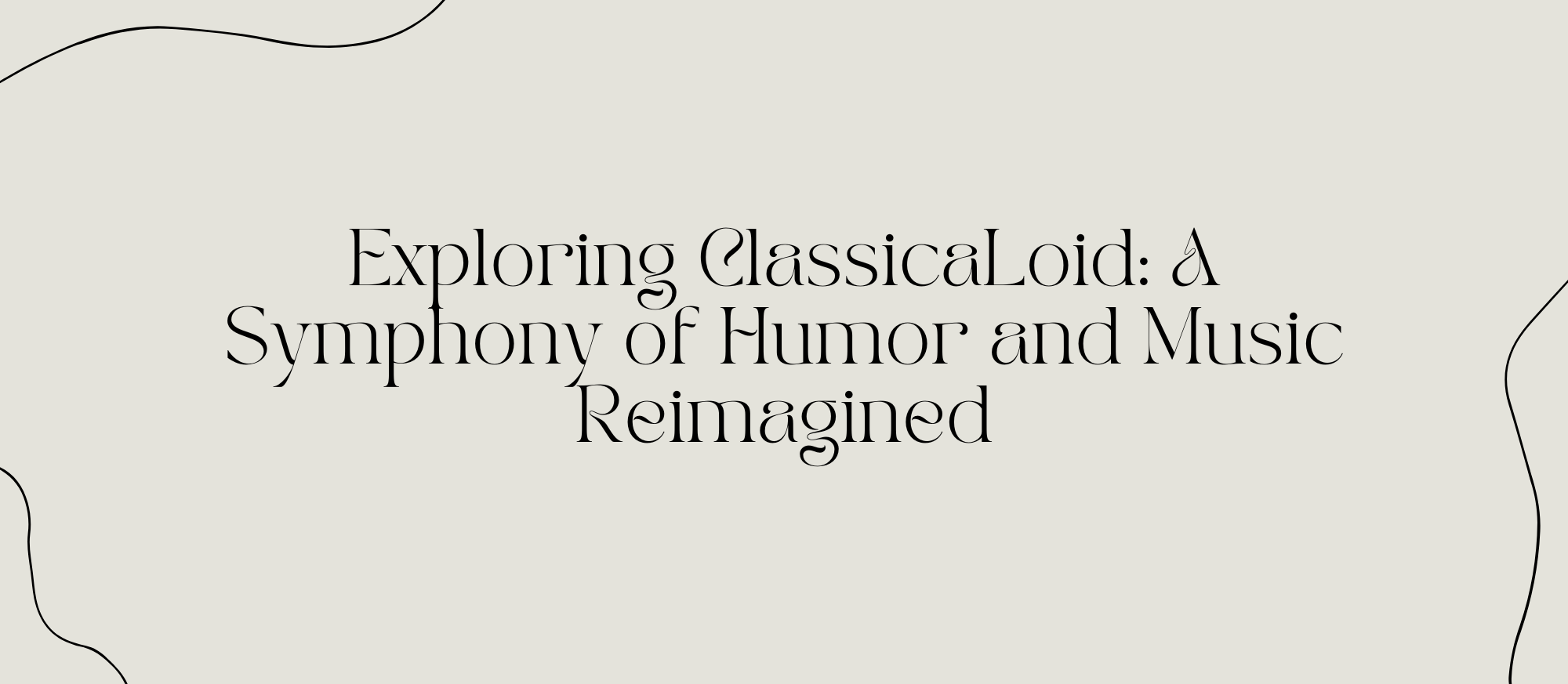Introduction

“ClassicaLoid” emerges as a delightful twist on classical music interwoven with the colorful threads of anime storytelling. This series reimagines the lives of some of the world’s most famous composers as “ClassicaLoids,” each endowed with supernatural powers that manifest through their music, bringing the bizarre and the wonderful into the everyday world.
The concept of “ClassicaLoids” brings figures like Beethoven, Mozart, and Chopin back to life in a modern setting, each wielding a unique ability known as “Musik.” This power allows them to affect both people and the environment in miraculous ways, often resulting in comedic and unexpectedly heartfelt episodes. The show weaves these historical figures into the life of Kanae, a high school girl struggling to maintain her family’s estate, which becomes a haven and battleground for the antics of these musical geniuses.
“ClassicaLoid” not only entertains with its absurd premises and vibrant animation but also educates by embedding elements of classical compositions into its soundtrack. Each episode features a “Musik” session where the ClassicaLoids perform modern renditions of their famous works, which dramatically influence the course of events in the show. This inventive approach not only serves to introduce classical music to a younger audience but also revitalizes it for those familiar with the genres.
By blending humor, drama, and classical music heritage, “ClassicaLoid” offers a fresh perspective on the lives and talents of these legendary composers. It stands out in the anime landscape as a testament to the timeless relevance of classical music, repackaged in a format that is accessible and engaging to a wide audience. This series proves that classical music can transcend time and still strike a chord in the heart of the contemporary viewer, making it a unique and valuable addition to the anime genre.
Plot Overview

“ClassicaLoid” spins a captivating tale set in the quaint town where Kanae and Sosuke live. Their ordinary lives take an extraordinary turn with the arrival of the Classicaloids, reincarnations of famous composers like Beethoven, Mozart, and Chopin, who possess the mysterious power known as “Musik.” This power allows them to perform pieces that can invoke various miraculous effects, affecting both humans and the physical world in unpredictable and often humorous ways.
The series delves into the chaotic daily interactions between Kanae, Sosuke, and the Classicaloids in Kanae’s old mansion. Each episode introduces new challenges as the Classicaloids’ use of Musik impacts the town, from altering weather patterns to reshaping entire landscapes or even manipulating emotions and memories, all wrapped in comedic antics yet underscored by deeper bonds forming among them.
As the plot unfolds, the true nature and potential of Musik are explored, revealing its capacity to not only create chaos but also to heal and inspire. The impact of Musik extends beyond mere physical effects, touching on the emotional growth of the characters and their understanding of friendship and family. Through its blend of fantasy and slice-of-life, “ClassicaLoid” offers a fresh narrative that redefines the boundaries between reality and the surreal, inviting viewers to a world where classical music bridges the gap between the mundane and the magical.
Character Analysis

“ClassicaLoid” presents a compelling ensemble of historical composers reborn as Classicaloids, each wielding unique powers that mirror their musical prowess and historical significance. Beethoven, or “Beethes,” is portrayed as an intense and passionate character, reflecting his real-life persona, with Musik powers that often lead to explosive and grandiose displays. Mozart, on the other hand, is whimsical and playful, creating chaos with a carefree attitude that mirrors his reputation for prodigious yet cheeky compositions.
The series cleverly ties each Classicaloid’s personality to their music legacy. For example, Chopin is introspective and often melancholic, aligning with his soulful and introspective compositions. Likewise, Liszt appears as a flamboyant and charismatic figure, embodying the grandeur and appeal of her historical counterpart’s virtuoso performances.
Through these characterizations, “ClassicaLoid” not only entertains but also educates its audience about classical music history in an accessible and humorous way. Each episode explores how their Musik can influence both the world and their interpersonal relationships, deepening the narrative and offering a fresh perspective on how these historical figures might interact in a modern setting.
Analyzing the Classicaloids provides insight into how their characteristics and supernatural abilities serve as extensions of their real-life legacies, offering viewers both a humorous and poignant look at the lives and talents of these legendary composers. This inventive approach not only pays homage to these musical giants but also reinvigorates their stories for a new generation.
Musical Themes and Soundtrack

“ClassicaLoid” masterfully intertwines classical music with its animated narrative, reimagining famous compositions to serve both comedic and dramatic purposes within the series. Each episode features a selection of renowned classical pieces that are modernized and woven into the storyline, often resulting in unique, genre-bending versions that remain true to the original spirit while appealing to contemporary audiences.
The series uses these musical themes not just as a backdrop but as a crucial element of story progression and character development. For example, Beethoven’s iconic symphonies are transformed to reflect his explosive personality and often result in chaotic yet hilarious outcomes that drive the plot forward. Similarly, Mozart’s playful serenades are used to enhance the whimsical and sometimes surreal experiences that the characters undergo, adding depth and a dynamic layer to the viewing experience.
The role of music in “ClassicaLoid” extends beyond mere entertainment, acting as a catalyst for character interactions and revelations. The reinterpretations of classical masterpieces are pivotal in resolving conflicts and developing relationships among the characters, showcasing how music can influence emotions and decisions. This approach not only celebrates the timeless relevance of classical music but also illustrates its powerful impact on human connections and narrative storytelling.
By integrating music so deeply into its core, “ClassicaLoid” offers a fresh take on the musical genre within anime, providing both an educational and entertaining experience that highlights the versatility and enduring appeal of classical compositions. The soundtrack, therefore, is not just complementary but essential to the series, enhancing every scene with appropriate emotional weight and contributing significantly to the overall charm and appeal of the show.
Cultural Impact and Reception

“ClassicaLoid” has made a significant cultural impact within the anime community, particularly noted for its innovative blend of classical music and modern storytelling. The series has been received positively by audiences and critics alike for its unique concept and refreshing approach to the anime genre.
Audience reception of “ClassicaLoid” often highlights the show’s ability to make classical music accessible and engaging through its whimsical and often surreal interpretation of famous composers and their music. The use of “Musik,” a power that allows characters to perform modern renditions of classical pieces, has been particularly praised for how it integrates into the plot, serving as both a narrative and thematic device that enhances character development and the overall story arc.
Critics have commended the series for its bold visuals and character designs, which complement the innovative musical scores that redefine classical compositions. The show’s ability to maintain a balance between reverence for classical music and its humorous reinterpretation has been a point of discussion, with many noting how it serves to introduce classical music to a wider, younger audience who might not have engaged with the genre otherwise.
The series has also been noted for its contribution to the anime genre by blending elements of music, comedy, and drama in a way that is seldom seen in other anime. It pushes the boundaries of typical genre classifications, creating a niche that appeals to a diverse range of viewers, from hardcore anime fans to classical music enthusiasts and those who enjoy creative narratives.
Overall, “ClassicaLoid” stands out as a cultural artifact in the anime industry, celebrated for its originality and its clever integration of music and storytelling. This reception underlines the show’s success in transcending conventional anime themes, thereby enriching the genre with its imaginative and culturally rich narrative approach.








